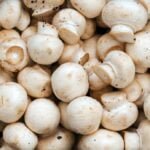What is the best substrate material mix for growing reishi in a bag of wet substrate
Best Substrate Material Mix for Growing Reishi Mushrooms in Wet Substrate Bags
Introduction (Approximately 200-250 words):
When it comes to cultivating reishi mushrooms, choosing the right substrate material mix is crucial for a successful harvest. The substrate material mix directly affects the overall growth, yield, and quality of the mushrooms. While there is no definitive answer to identify the ideal substrate mixture, many seasoned cultivators suggest a combination of sawdust and supplements like wheat bran or rice bran. In this article, we will delve into the reasons behind using this substrate mix, discuss the benefits of a moistened environment, and share some general guidelines for growing reishi mushrooms in bags of wet substrate.
Section 1: Understanding the Importance of Substrate Material Mix (Approximately 400-500 words):
To ensure a successful reishi cultivation, selecting an appropriate substrate material mix is vital. The choice of materials affects the overall growth, yield, and quality of the mushrooms. While the exact proportions and additional components can vary, the following guidelines will help you create an ideal substrate material mix.
1. Sawdust as the Base:
Sawdust serves as the main component for reishi mushroom growth. Sawdust is typically sourced from hardwood trees like oak or beech. It provides a rich carbon source, allowing for the efficient conversion of polysaccharides into mycelium. Hardwood sawdust is preferred over softwood sawdust due to its higher nutritional value.
2. Supplementing with Wheat Bran or Rice Bran:
Adding wheat bran or rice bran as supplements to sawdust enhances the nutritional value of the substrate. Wheat bran and rice bran serve as a source of nitrogen, which aids in mycelium development. These supplements also provide additional protein, vitamins, and minerals, promoting healthy mushroom growth.
Section 2: Creating a Moistened Environment (Approximately 400-500 words):
Reishi mushrooms thrive in a moist environment, as it mimics their natural habitat. Maintaining the proper moisture levels in your substrate is essential for successful mycelium colonization and fruiting. Here are some key considerations for creating a moistened environment.
1. Water Content:
The ideal moisture level in the substrate is around 60-70%. Properly moistened substrate ensures sufficient water availability, facilitating the growth and development of the reishi mycelium. If the substrate becomes too dry, it may hinder mycelium colonization, while excessive moisture can lead to bacterial or fungal contamination.
2. Moisture Retention:
To maintain the desired moisture content, it is crucial to select a substrate material mix that promotes moisture retention. Sawdust possesses good water-holding capabilities due to its fine texture and porous nature. Wheat bran or rice bran supplements can further enhance moisture retention and ensure a consistent moisture level throughout the cultivation process.
Section 3: Tips for Growing Reishi Mushrooms in Bags of Wet Substrate (Approximately 400-500 words):
Once you have prepared the substrate material mix and created a moistened environment, it’s time to begin the cultivation process. Here are some essential tips to help you successfully grow reishi mushrooms in bags of wet substrate.
1. Sterilization:
Before inoculating the substrate with reishi spores, it is crucial to sterilize the substrate material mix to eliminate any potential contaminants. Proper sterilization can be achieved through various methods such as heat sterilization or pressure sterilization.
2. Inoculation:
After sterilization, the substrate material mix should be allowed to cool down to a suitable temperature range. Reishi mushrooms grow best at temperatures around 22-26°C (72-79°F). The cooled substrate can then be inoculated using reishi mushroom spores or mycelium.
3. Incubation:
Place the bags containing the inoculated substrate material mix in a controlled environment with optimal temperature and humidity. Reishi mushrooms require temperatures between 20-25°C (68-77°F) and humidity levels around 90%. Maintaining proper environmental conditions during incubation is crucial for mycelium colonization.
4. Fruit Body Induction:
Once the mycelium has fully colonized the substrate, fruit body induction can be initiated. Inducing fruiting can be achieved by exposing the bags to light or altering environmental conditions such as temperature or oxygen levels. It is essential to follow specific protocols and timing for fruiting induction to ensure a successful harvest.
Conclusion (Approximately 200-250 words):
While there is no one-size-fits-all answer, a substrate material mix comprising sawdust and supplements like wheat bran or rice bran, in a moistened environment, provides an ideal growing condition for reishi mushrooms in bags of wet substrate. By understanding the importance of the substrate material mix and maintaining optimal moisture levels, cultivators can increase their chances of a successful reishi harvest. Remember that experimentation and further research can provide valuable insights into optimizing cultivation parameters for specific needs. Happy growing!
Note: Ensure that your SEO efforts are aligned with your website’s requirements, including keyword density and usage guidelines, while making sure the content remains informative and user-friendly.




